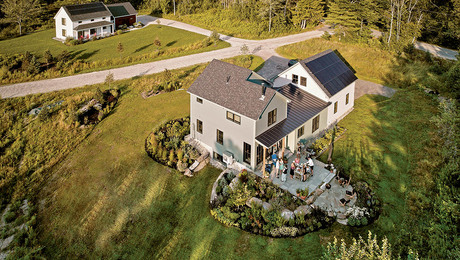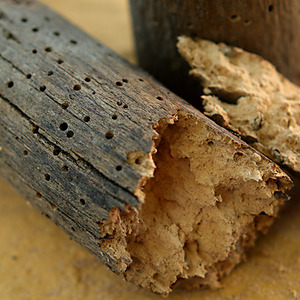Jackleg garage insulation question
The jackleg being me and the garage being an ancient beast, perhaps 1914? It has stucco on the exteriorer over redwood siding.
I am turning it into my dream shop and I have a question about insulation. I realize it will never be super insulated (metal roll up door, etc) but I would like it so that I can keep it warm enough my hands don’t freeze anytime I touch metal. It doesn’t get too cold here in Sacramento but it does say in the high 30s and 40s at night.
Okay, here is my question. I was reading up on how to insulate walls and they talk about the importance of putting in a moisture barrier and that if you are doing it after the walls are up, painting with an oil based paint first is the way to go.
So, my fear is that painting the siding (on the inside) is going to trap moisture in there that previously bled through the exterior wall and evaporated on the inside. So, by painting the interior wall prior to insulatating it all I am creating is a recipe for dryrot in the siding, am I being overly cautious or is there a better solution?
Thanks in advance!
Michael


















Replies
Is the siding painted on the exterior face? If not, then there's no way to "trap" the moisture. But ... moisture behind paint is a great way to peel the paint off. So moisture wicking from the outside might try to blister the paint on the inner face.
"When asked if you can do something, tell'em "Why certainly I can", then get busy and find a way to do it." T. Roosevelt
You misunderstand. You'd use the paint approach if the interior wall surface was already installed, and you were going to blow insulation into it or some such.
In your case I assume you're going to install fiberglass and then drywall, or maybe chipboard.
If so, you should install the FG, then cover with plastic sheet, then put up your interior wall surface. No need for paint you wouldn't otherwise apply.
BTW, be sure to somehow ventillate the "attic" area, if you're putting in a "ceiling". If you close off the "attic" entirely then moisture can collect up there and cause problems.
Don't worry too much about getting the plastic tightly sealed and the "attic" really "well ventillated", though. You won't be taking showers in this building (I don't think) and as leaky as it will be the amount of moisture coming from inside will be minimal. The plastic and attic ventillation will basically be a little extra insurance.
Edited 10/5/2005 6:08 pm ET by DanH
Thanks for all the great info!
The moisture I was worried about trapping was from the outside/exterior wall.
However, I WAS hoping to seal off the ceiling but if moisture condensation is an issue then I am SOL. The garage has a corregated metal roof which is HOT in the summer and cold as heck in the winter, sort of worst of both worlds.
What I MOST want to insulate is the ceiling because other than the metal garage door (I am getting an insulation kit for it) the ceiling is my worst heat loss (I assume).
The garage is built like a giant shed with an angled roof with the slop getting higher at the front. The joists run side to side.
I could use styrofoam board insulation or is there something that might work better?
vapor barrier will not work because of the roll up door, so dont worry about it leave it off, and never put a vapor barrier on a ceiling
It won't hurt to insulate the ceiling if you add a little ventillation above, as I said. In your situation a couple of gable end vents would suffice, but it would stay cooler in summer with eave and ridge vents.You can put plastic between ceiling finish and insulation -- it won't hurt, might help. If you use fiberglass in the ceiling, with the top of the FG exposed to the "attic", staple house wrap across the top of the ceiling joists (above the insulation), both to keep the insulation clean and to provide an air infiltration barrier. Unfaced FG insulation open to the attic with no air infiltration barrier is pretty worthless.
The problem with both insulating and ventilating my shop/roof is that the joists run opposite the pitch of the slant roof. I would have to put vents in between each joist and a way for cool air to enter to allow the hot air to exit.
I have to redo the roof because the tin has lifted up because of either nails pulling or something, not sure what. Perhaps I could sheeth over the joists with 1/4 plywood and then run 2X4s front to back over the joists and then put the metal roofing back down over the 2x4s so that I could put soffits at the rear of the garage and then vents at the front/top?
Can't anything ever be simple?
You could probably get away with putting vents at each end. Won't dissipate the heat as well as you might like, but will be enough to keep the area reasonably dry, so long as the roof doesn't leak too much. You could improve things a hair by knocking out about every 4th ridge in the spacers that I assume (from what I can see in the pictures) are between the tin and the joist tops. The joists or purlins directly supporting the roofing need to run perpendicular to the roofing corrugations, which for drainage means they must run across the slope.If you were to reroof, one option would be a "hot roof" with sheathing first, then foamboard, and then the tin. No ventillation required in that case.
--------------
No electrons were harmed in the making of this post.
Dan,
Thanks for the response!
The tin roof sits directly on the joists.
I like the idea of the "hot roof" with the foam sandwitch. Since I make gunstocks not buildings, all this stuff is a bit foreign to me. When you say "foamboard" is that the styrofoam sheets with aluminium on one side they sell at home depot, or is it something fancier? Oh, when you say sheathing, do you mean some sort of thin plywood or something specific?
Sorry for all the ignorant questions!
Michael
Yep and yep. The foamboard comes in several different types, and there are others here better equipped to recommend a specific type. You'd probably want about an inch thick. The sheathing is standard roof sheathing plywood or flakeboard (generally just shy of 1/2" thick), or, with the steel on top, you can probably go to 3/8" (to save money).There are probably ways you could forgo the sheathing and just use strapping (thin boards, spaced apart) under the foam, but that makes installation a bit trickier.If you're a glutton for punishment, you could probably glue or otherwise affix foam to the bottom of the existing roof.
--------------
No electrons were harmed in the making of this post.
(Actually, it might not be dumb to just get the bottom of the existing roof "sprayed" with wet cellulose or one of the spray foams.)--------------
No electrons were harmed in the making of this post.